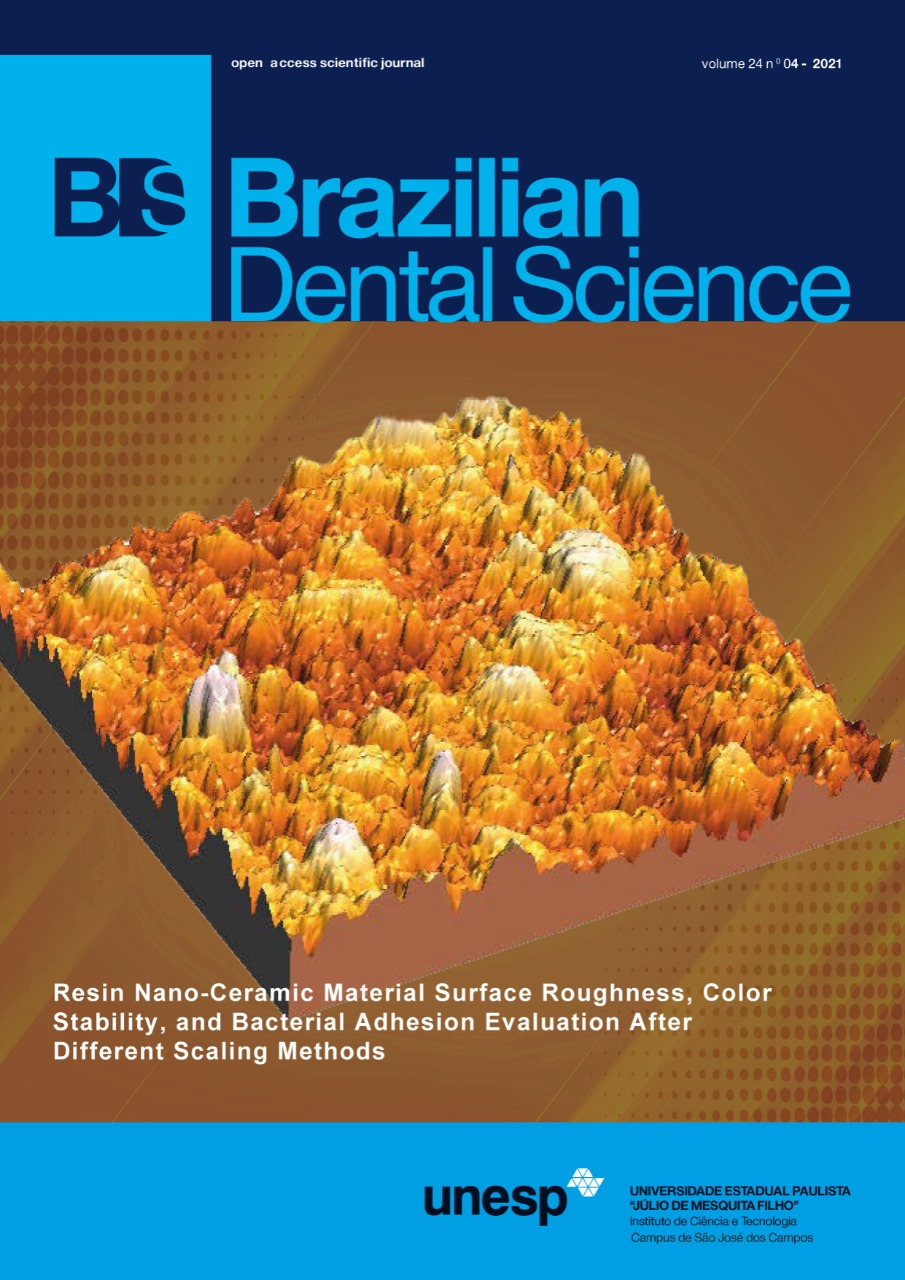Estimation of the autoclave and different surface treatments on microleakage between soft liner and heat-cured acrylic
DOI:
https://doi.org/10.14295/bds.2021.v24i4.2610Abstract
Objective: The present study was oriented to estimate the effect of different surface treatments on the microleakage between the soft liner and acrylic with and without the use of autoclave as disinfection method. Material and Methods: Sixty samples were split into two groups: the autoclaved groups and non-autoclaved groups. Each one subdivided into three groups: first one without any treatments as a control group; in the second group surface of the samples were treated with CO2 laser (10.6 nm wavelength for 15 seconds), and in the third group the surface was treated with sandblasting. All the samples exposed to thermocycling, then the microleakage test was evaluated by gauging dye penetration depth between the soft liner and acrylic disc using a digital microscope. Data analyzed statistically by One-way ANOVA and Tukey's post-hoc tests. In addition, t-test was used for comparison between two groups . Results: The maximum mean values for the microleakage were observed in the untreated group (control) followed by the group treated by CO2 laser and the lowest mean value of microleakage was related to the third group for both non-autoclaved and autoclaved groups with significant differences among them. In addition, depending on the use of autoclave, there was non-significant in all studied groups. Conclusions: There was a decrease in the microleakage when the surface treated with CO2 laser and sandblast. The use of autoclave did not badly change the microleakage between the soft liner and denture base.
Keywords
Microleakage; Soft liner; Autoclave; CO2 laser; Sandblast.
Downloads
Downloads
Published
How to Cite
Issue
Section
License
Brazilian Dental Science uses the Creative Commons (CC-BY 4.0) license, thus preserving the integrity of articles in an open access environment. The journal allows the author to retain publishing rights without restrictions.
=================




























